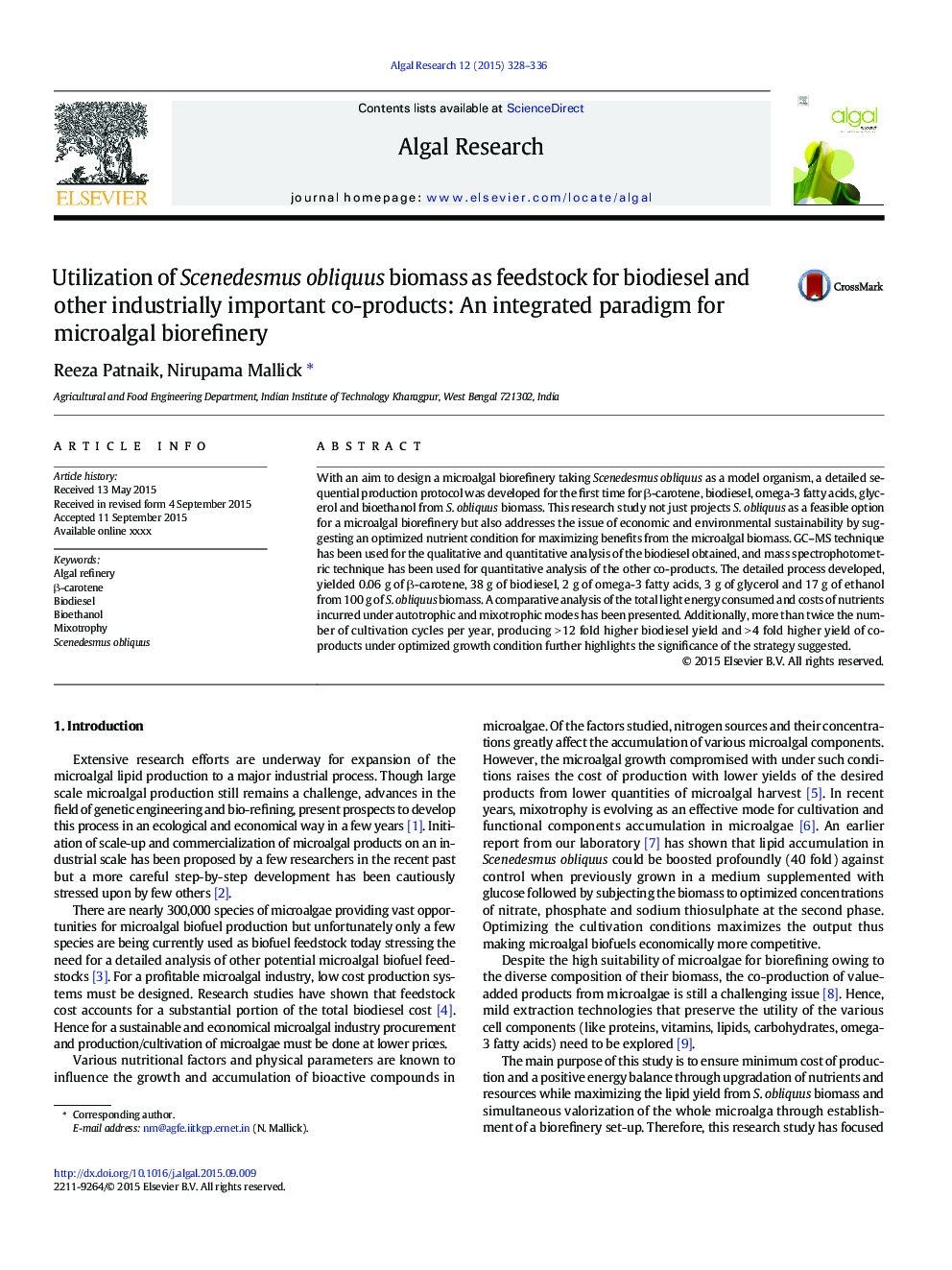| Article ID | Journal | Published Year | Pages | File Type |
|---|---|---|---|---|
| 8087812 | Algal Research | 2015 | 9 Pages |
Abstract
With an aim to design a microalgal biorefinery taking Scenedesmus obliquus as a model organism, a detailed sequential production protocol was developed for the first time for β-carotene, biodiesel, omega-3 fatty acids, glycerol and bioethanol from S. obliquus biomass. This research study not just projects S. obliquus as a feasible option for a microalgal biorefinery but also addresses the issue of economic and environmental sustainability by suggesting an optimized nutrient condition for maximizing benefits from the microalgal biomass. GC-MS technique has been used for the qualitative and quantitative analysis of the biodiesel obtained, and mass spectrophotometric technique has been used for quantitative analysis of the other co-products. The detailed process developed, yielded 0.06 g of β-carotene, 38 g of biodiesel, 2 g of omega-3 fatty acids, 3 g of glycerol and 17 g of ethanol from 100 g of S. obliquus biomass. A comparative analysis of the total light energy consumed and costs of nutrients incurred under autotrophic and mixotrophic modes has been presented. Additionally, more than twice the number of cultivation cycles per year, producing > 12 fold higher biodiesel yield and > 4 fold higher yield of co-products under optimized growth condition further highlights the significance of the strategy suggested.
Related Topics
Physical Sciences and Engineering
Energy
Renewable Energy, Sustainability and the Environment
Authors
Reeza Patnaik, Nirupama Mallick,
